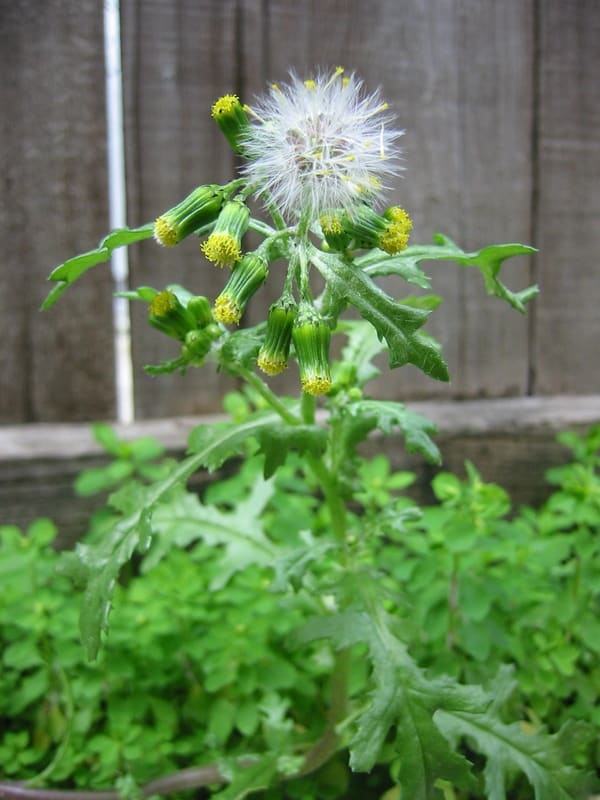Common groundsel, Groundsel, Old-man-in-the-spring, Chickenweed, Grinnel
Senecio vulgaris

🌿 Morphology
🌞 Growing conditions
🌍 Origin and family
🌾 Uses
Warning: Despite the care taken in writing this sheet, it is essential to cross-reference sources before using or consuming any plant. When in doubt, consult a qualified professional
Permaculture uses
While often considered a weed, common groundsel has edible young shoots and leaves when cooked, though it's often bitter. It's primarily used as a green manure and soil amendment, adding nutrients back into the soil. Chickens enjoy eating it, hence the name 'Chickenweed'. Avoid internal use due to pyrrolizidine alkaloids, which can cause liver damage with prolonged consumption.
Permapeople description
An annual weed with yellow flowers.
Botanical description
Senecio vulgaris, also known as common groundsel, is an annual flowering plant in the daisy family Asteraceae. It is native to Europe and Asia but is now naturalized worldwide. It grows to a height of 10-40 cm, with erect, branching stems. The leaves are pinnately lobed, with toothed margins. The flower heads are small, cylindrical, and arranged in clusters. Each flower head contains numerous yellow disc florets and no ray florets. The plant reproduces by seed, with each flower head producing numerous seeds with fluffy pappus, allowing for wind dispersal.
Companion planting
Generally considered a weed and not actively companion planted. It can compete with crops for resources, especially in gardens. It may attract beneficial insects, but this benefit is often outweighed by its weedy nature.
Propagation methods
Common groundsel propagates easily from seed. The seeds can be sown directly into the ground in spring or fall. It self-seeds readily, so control may be needed to prevent it from becoming invasive. It does not propagate well from cuttings.
History and traditions
Historically, common groundsel has been used in traditional medicine as a diuretic and emmenagogue. It was also believed to have wound-healing properties. In some cultures, it was used as a poultice for skin irritations and burns. However, due to its potential toxicity, its medicinal use has declined in modern times. Some believe that the plant has magical properties, used in protection rituals.
Usage calendar
Flowering: Throughout the year, especially spring to fall. Harvesting: Young shoots and leaves can be harvested in spring. Planting: Seeds can be sown in spring or fall. Pruning: Not typically pruned, but deadheading can prevent excessive seed production.
